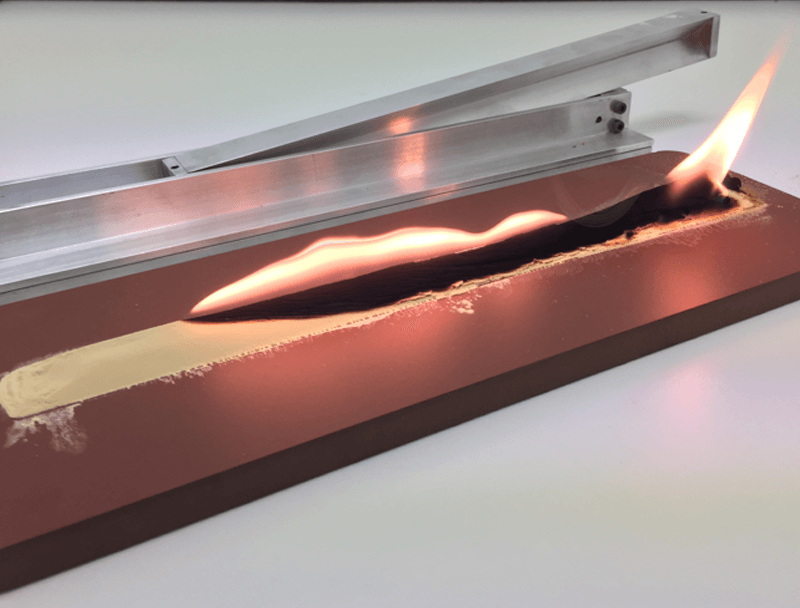Transportation Classification Testing
UN Manual of Test & Criteria UN Test N.1 / CLP / GHS
The test is conducted primarily for the purposes of transportation. A powder strip is formed using a triangular cross sectioned mould, onto a heat resistant, non-porous plate. Using a butane flame, one end of the strip is ignited and the initially the time taken to burn over a marked 200 mm length is recorded. If the time taken is equal to or less than 120 s then further trials are conducted over fresh powder strips and the burning rate over a length of 100 mm measured. If the time taken is equal to or less than 45 s (2.2 mm.s-1) then the material is classified as a ‘Flammable or Combustible Solid, of UN Class 4, Division 4.1. During the 100 mm trials, a section of the material past the 100 mm mark is wetted and observations are made to whether the wetted zone, stops flame propagation for at least 4 minutes. If the wetted zone fails to stop propagation the material is designated to packing group 2, if it succeeds, a packing group 3 designation is given. The test method is identical to that detailed within CLP/GHS regulatory procedures and therefore data gathered can be used for both applications.

Materials that are being classified for transport as a flammable solid, based on either guess work or comparative studies are often incorrect and the large costs associated with classified flammable materials can be avoided. Because a product, contains a known flammable constituent, doesn’t simply mean the blend should also be classified.

The test is conducted primarily for the purposes of transportation. Mixtures of a reference oxidiser (potassium bromate) / cellulose (fuel) and mixtures of the substance and cellulose (fuel) to be tested are prepared in specified ratios.
Read More© 2024 Sigma-HSE (India) Pvt Ltd | Registered in India No. U93000DL2014PTC266010 | Designed By WebClixs